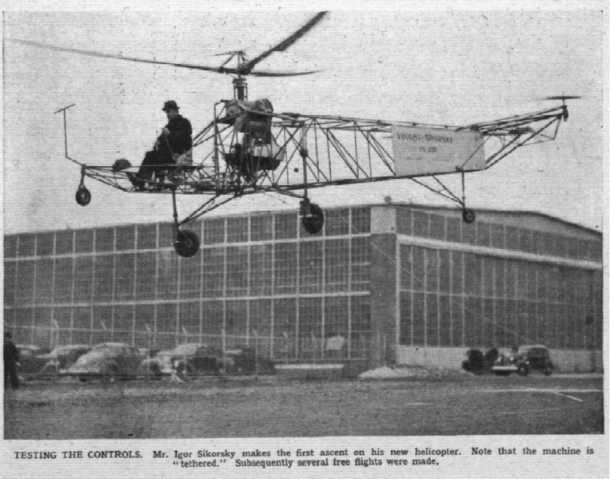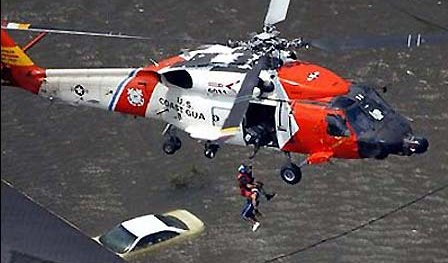-
Making the Brazilian ATR-72 Spin
by
No Comments

Note: This story was corrected on August 10th at 10:23 am, thanks to the help of a sharp-eyed reader.
Making an ATR-72 Spin
I wasn’t in Brazil on Friday afternoon, but I saw the post on Twitter or X (or whatever you call it) showing a Brazil ATR-72, Voepass Airlines flight 2283, rotating in a spin as it plunged to the ground near Sao Paulo from its 17,000-foot cruising altitude. All 61 people aboard perished in the ensuing crash and fire. A timeline from FlightRadar 24 indicates that the fall only lasted about a minute, so the aircraft was clearly out of control. Industry research shows Loss of Control in Flight (LOCI) continues to be responsible for more fatalities worldwide than any other kind of aircraft accident.
The big question is why the crew lost control of this airplane. The ADS-B data from FlightRadar 24 does offer a couple of possible clues. The ATR’s speed declined during the descent rather than increased, which means the aircraft’s wing was probably stalled. The ATR’s airfoil had exceeded its critical angle of attack and lacked sufficient lift to remain airborne. Add to this the rotation observed, and the only answer is a spin.

Can a Large Airplane Spin?
The simple answer is yes. If you induce rotation to almost any aircraft while the wing is stalled, it can spin, even an aircraft as large as the ATR-72. By the way, the largest of the ATR models, the 600, weighs nearly 51,000 pounds.
Of course, investigators will ask why the ATR’s wing was stalled. It could have been related to a failed engine or ice on the wings or tailplane. (more…)
-
How the FAA Let Remote Tower Technology Slip Right Through Its Fingers
by
No Comments
In June 2023, the FAA published a 167-page document outlining the agency’s desire to replace dozens of 40-year-old airport control towers with new environmentally friendly brick-and-mortar structures. These towers are, of course, where hundreds of air traffic controllers ply their trade … ensuring the aircraft within their local airspace are safely separated from each other during landing and takeoff.
The FAA’s report was part of President Biden’s Infrastructure Investment and Jobs Act enacted on November 15, 2021. That bill set aside a whopping $25 billion spread across five years to cover the cost of replacing those aging towers. The agency said it considered a number of alternatives about how to spend that $5 billion each year, rather than on brick and mortar buildings.
One alternative addressed only briefly before rejecting it was a relatively new concept called a Remote Tower, originally created by Saab in Europe in partnership with the Virginia-based VSATSLab Inc. The European technology giant has been successfully running Remote Towers in place of the traditional buildings in Europe for almost 10 years. One of Saab’s more well-known Remote Tower sites is at London City Airport. London also plans to create a virtual backup ATC facility at London Heathrow, the busiest airport in Europe.
A remote tower and its associated technology replace the traditional 60-70 foot glass domed control tower building you might see at your local airport, but it doesn’t eliminate any human air traffic controllers or their roles in keeping aircraft separated.

Max Trescott photo Inside a Remote Tower Operation
In place of a normal control tower building, the airport erects a small steel tower or even an 8-inch diameter pole perhaps 20-40 feet high, similar to a radio or cell phone tower. Dozens of high-definition cameras are attached to the new Remote Tower’s structure, each aimed at an arrival or departure path, as well as various ramps around the airport.
Using HD cameras, controllers can zoom in on any given point within the camera’s range, say an aircraft on final approach. The only way to accomplish that in a control tower today is if the controller picks up a pair of binoculars. The HD cameras also offer infrared capabilities to allow for better-than-human visuals, especially during bad weather or at night.
The next step in constructing a remote tower is locating the control room where the video feeds will terminate. Instead of the round glass room perched atop a standard control tower, imagine a semi-circular room located at ground level. Inside that room, the walls are lined with 14, 55-inch high-definition video screens hung next to each other with the wider portion of the screen running top to bottom.
After connecting the video feeds, the compression technology manages to consolidate 360 degrees of viewing area into a 220-degree spread across the video screens. That creates essentially the same view of the entire airport that a controller would normally see out the windows of the tower cab without the need to move their head more than 220 degrees. Another Remote Tower benefit is that each aircraft within visual range can be tagged with that aircraft’s tail number, just as it might if the controller were looking at a radar screen. (more…)
-
Hurricane Helicopter Love
by
No Comments
 In the aftermath of Hurricane Harvey and the ongoing rampage of Irma (with Jose and Katia on her heels), let’s give a moment of silent thanks to Igor Sikorsky who made the inaugural flight of the world’s first practical helicopter, the VS-300, this week, on September 14, 1939. Think about that for a moment. Where would we be right now if this intrepid designer decided that the uncountable challenges of getting so many interlocking parts to rotate for the common good was insurmountable?
In the aftermath of Hurricane Harvey and the ongoing rampage of Irma (with Jose and Katia on her heels), let’s give a moment of silent thanks to Igor Sikorsky who made the inaugural flight of the world’s first practical helicopter, the VS-300, this week, on September 14, 1939. Think about that for a moment. Where would we be right now if this intrepid designer decided that the uncountable challenges of getting so many interlocking parts to rotate for the common good was insurmountable?As anyone who’s studied (or attempted to study) rotary wing aerodynamics can appreciate, it is not an east subject. With lead and lag and flap and all the rest, visualizing the relative wind’s relationship with an airfoil that is moving in two directions is not as easy as seeing a fixed wing moving forward in a slipstream delineated with smoky stripes. Painting a picture of it with words is an even greater challenge, which is why it is always easier to make a joke. Take, for instance, the bumble bee. It’s not supposed to fly either, but like the helicopter, it doesn’t know that.
 Thanks to two years as a crewman on a Navy Huey helicopter, first and foremost I’m a dedicated rotorhead. Given a choice (and sufficient funds), I would fly nothing else. But it seems whenever aviators who favor fixed wings run into those who know that rotating wings provide the ultimate in flying fun, it’s time to make fun of helicopters for their fixed-wing failings. They are not very fast, and they don’t fly as far, etc., etc.
Thanks to two years as a crewman on a Navy Huey helicopter, first and foremost I’m a dedicated rotorhead. Given a choice (and sufficient funds), I would fly nothing else. But it seems whenever aviators who favor fixed wings run into those who know that rotating wings provide the ultimate in flying fun, it’s time to make fun of helicopters for their fixed-wing failings. They are not very fast, and they don’t fly as far, etc., etc.But people stop making these jokes when, say, they are floating in some fast expanse of water and the only sign of humanity is in that whirring machine that was once the butt of their jokes. Then helicopters are pretty impressive flying machines. And I’m sure that every helo crewman who’s endured rotary ridicule at the hands of floating aficionados of fixed wings has been tempted to dangle the horse collar just out of their reach for awhile, just to make a point.
As as we rescue those savaged by Mother Nature and restore lives to some degree of quotidian sameness, remember that helicopters are more than saviors when times are dire, and spread the good word of their unique and essential contributions when times are good. — Scott Spangler, Editor
-
What Was AirVenture’s Most Interesting Airplane?
by
No Comments
For about a month that follows EAA AirVenture, the most popular question posed by friends and acquaintances is What is the most interesting airplane you saw? This has always been the question since I attended my first Oshkosh convocation in 1978, and I’m sure it will continue until I can no longer perambulate the flight line.
 Answering the question is an exercise in subjectivity, so every individual’s answer is based on their aviation interests. Over the years I’ve developed a system, 3 Rs & U. To determine the most interesting airplanes, it has to be Rare, like the world’s only flying Douglas A-20 Havoc.
Answering the question is an exercise in subjectivity, so every individual’s answer is based on their aviation interests. Over the years I’ve developed a system, 3 Rs & U. To determine the most interesting airplanes, it has to be Rare, like the world’s only flying Douglas A-20 Havoc. Or it has to be Renowned, like the B-52, which made its second trip to Oshkosh this year. And it can be Resurrected, which put the renowned D-Day leading C-47 That’s All Brother, which Basler Turbo Conversions is now restoring for the CAF, ahead of two homebuilt designs from the 1970s.
Or it has to be Renowned, like the B-52, which made its second trip to Oshkosh this year. And it can be Resurrected, which put the renowned D-Day leading C-47 That’s All Brother, which Basler Turbo Conversions is now restoring for the CAF, ahead of two homebuilt designs from the 1970s.But surpassing all of these is any older aircraft that was previously Unknown to me after a lifetime consumption of everything aviation. That makes the Boeing YL-15G Scout the most interesting airplane of AirVenture 2017.





 A love of aviation is often passed down through families from one generation to the next. Such was not the case for me. In fact, my passion for things with wings has usually been viewed by my family with an air of exasperated patience. “Don’t mind her – she likes airplanes.” This has not stopped me, however, from trying to encourage my kids to become interested in aviation, and a Young Eagles flight was a key.
A love of aviation is often passed down through families from one generation to the next. Such was not the case for me. In fact, my passion for things with wings has usually been viewed by my family with an air of exasperated patience. “Don’t mind her – she likes airplanes.” This has not stopped me, however, from trying to encourage my kids to become interested in aviation, and a Young Eagles flight was a key.